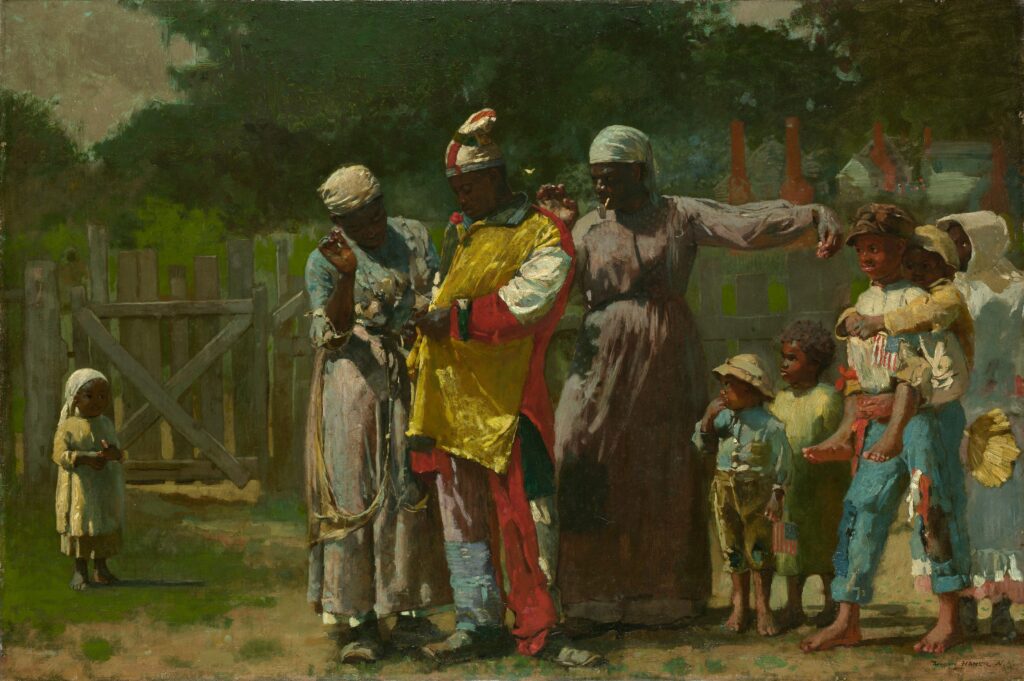 Dressing for the Carnival – Winslow Homer – The Metropolitan Museum of Art
Dressing for the Carnival – Winslow Homer – The Metropolitan Museum of Art
“In this Reconstruction-era painting, Homer evokes the dislocation and endurance of African American culture that was a legacy of slavery. The central figure represents a character from a Christmas celebration known as Jonkonnu, once observed by enslaved people in North Carolina and, possibly, eastern Virginia. Rooted in the culture of the British West Indies, the festival blended African and European traditions. After the Civil War, aspects of Jonkonnu were incorporated into Independence Day events; the painting’s original title was Sketch—4th of July in Virginia. The theme of independence was particularly relevant in 1877, when emancipated Black Americans in the South saw an end to their brief experience of full civil rights with the final withdrawal of federal troops.” The Metropolitan Museum of Art.

Detail – Dressing for the Carnival
Winslow Homer
Although Homer is known for his soft, atmospheric watercolor paintings, in Dressing for the Carnival, he paints with bravura.
What Is Bravura?

Detail Dressing for the Carnival – Winslow Homer

Detail Dressing for the Carnival – Winslow Homer

Detail Dressing for the Carnival – Winslow Homer

Detail Dressing for the Carnival – Winslow Homer
Detail Dressing for the Carnival – Winslow Homer
Notice the flag in the above painting. Jonkoonu is usually celebrated during the Christmas season, but in this instance, the people are celebrating this tradition on the 4th of July.

Detail Dressing for the Carnival – Winslow Homer
What IS Jonkonnu
“When Africans were captured and sold as slaves, they brought with them many of their religious, ceremonial, and festival traditions. Jonkonnu, also known as John Coonering, was one such Christmastide tradition that tapped into its African spiritual roots through combination of costume, music, and dance. The tradition appeared in Jamaica during colonial times, and later spread to others Caribbean islands, Bermuda, and North Carolina.
“Revelers participating in Jonkonnu would dress in masks and multi-colored costumes, form a parade line, and travel from house-to-house clapping, singing, and dancing, During the festivities the performers could put aside their daily toils and enjoy themselves in the celebration. The parade would perform at each house until the homeowners, usually the performers’ enslavers, came outside and paid them in coins.
What can you Do with Jonkonnu?
Tryon Palace celebration reaches beyond the holidays. Free drumming and dancing camps are held throughout the summer for children interested in learning about the joys of Jonkonnu. Teachers and education programs can now purchase a Jonkonnu activity book with a CD. Jonkonnu also participates in community programs and celebrations, parades, as well as school and other educational programs.”
Discover more from Jacki Kellum
Subscribe to get the latest posts sent to your email.